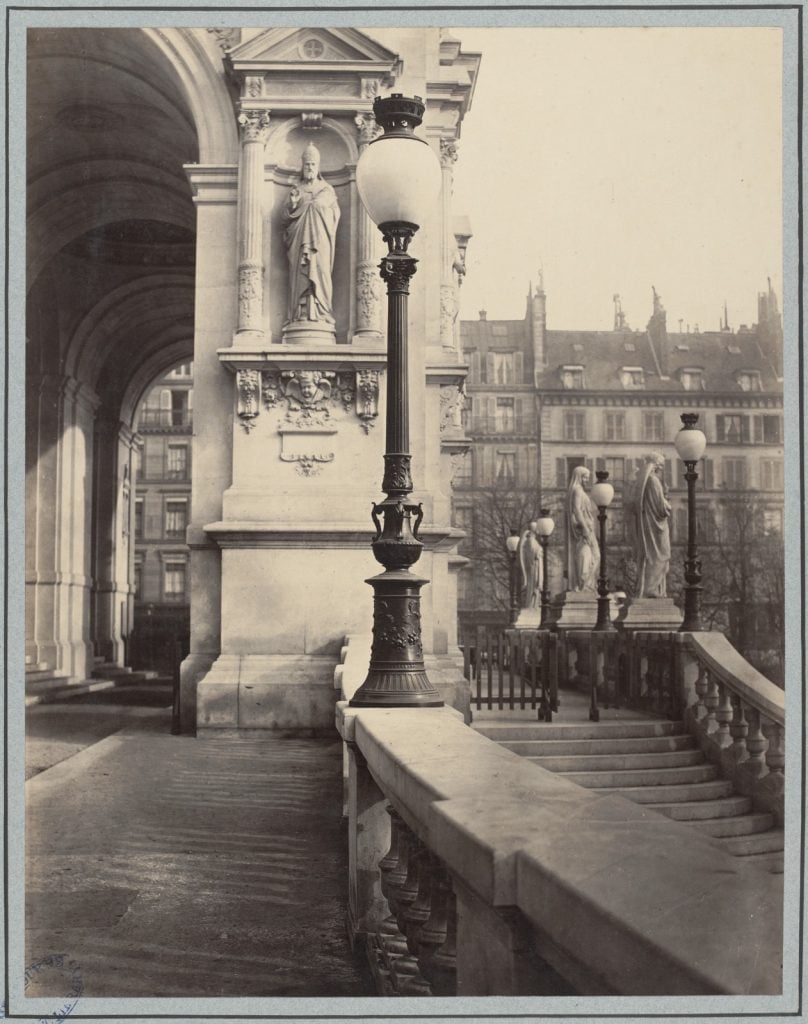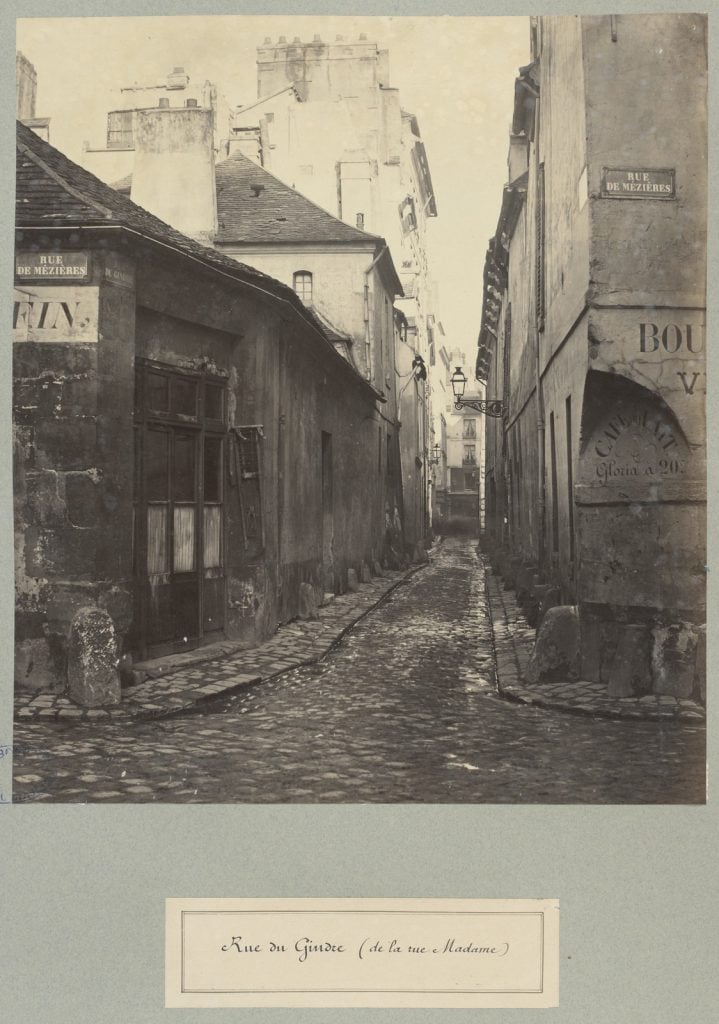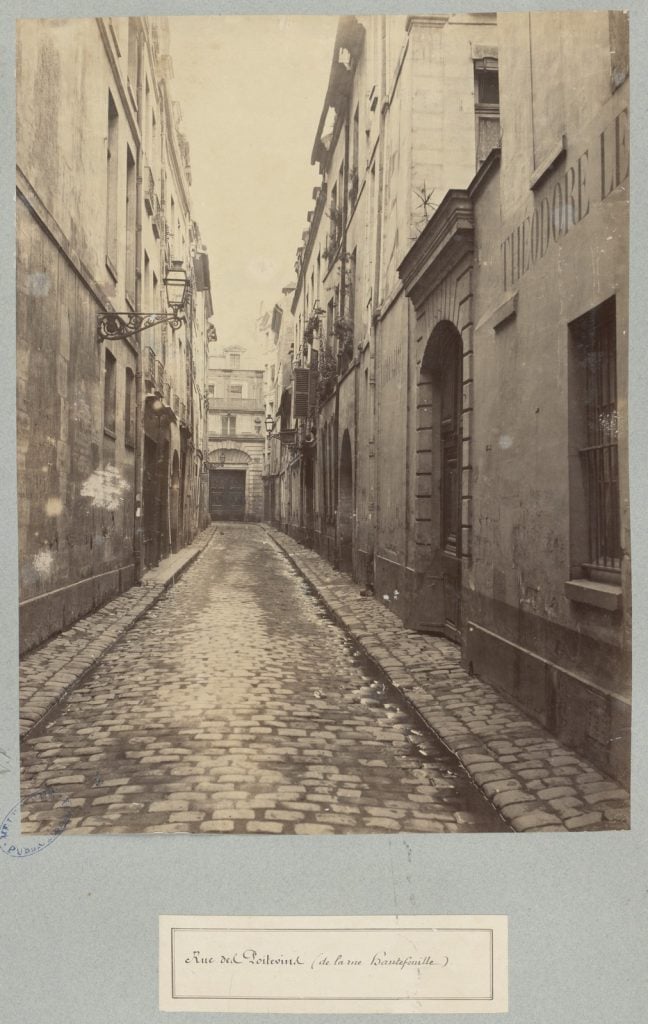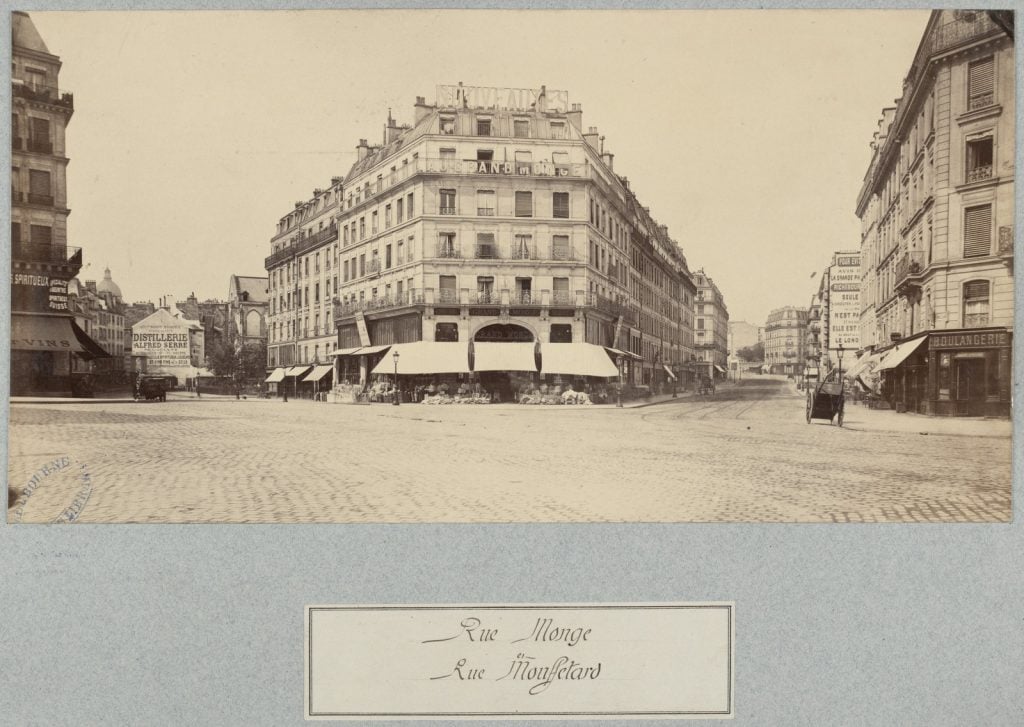One day Paris decided it was time for a makeover. The makeover was supposed to be spectacular, and I believe, without a doubt, this has been achieved.

[ca. 1877]. Photo by Charles Marville; H88.19/2/91
In the 1850s, when the makeover began1, photography as an art was at its very beginning. People were experimenting, trying to understand how it worked, or were wholly unimpressed by this new ‘gadget’. But some were totally mesmerized by what the machine could do and how it could transpose their exact ‘point of view’ of a location, object, or person 2. One of these people was Charles Marville and in 1851 he started taking photographs of old Parisian buildings and ancient quarters, prior to the redevelopment3. If it wasn’t for Marville we would have no idea how Paris looked before its makeover and it would have never occurred to us that Paris had lots of slums, desolating looking places and houses – all wrapped in that ‘la vie en rose’ charm, of course. Marville documented Paris before and after its makeover meticulously, with the eye of an expert and with the great love he had for his city4.

[ca.1877]. Photo by Charles Marville; H88.19/31
Beautiful story, but what does Melbourne have to do with all this? Or State Library Victoria? In the most serendipitous way – everything! Marville started making a profession out of photography. Usually, he was contracted by particular collectors that would buy his pictures, but he started gaining some fame by displaying his works in various International Exhibitions5. A year after the Sydney International Exhibition of 1879, Melbourne hosted another Universal Exhibition aimed at promoting commerce, industry, science and education. The Paris Pavilion, built by municipal authorities, aimed at illustrating the ongoing modernisation of the capital. Marville’s photographs were among the items shown here. Like several other countries, France made a gift of their exhibits to the Australian people 6.

[ca.1877]. Photo by Charles Marville; H88.19/28
The French donation was registered in the accession record of State Library Victoria (Melbourne Public Library back then) on April 8, 1881. We have photographs of the streets of Paris, old and new, of monuments and parks, of sculptures. The collection also includes reproductions by Marville of designs for public spaces and buildings. Our Library is proud to possess the largest known collection of Marville photographs portraying the old and new Paris. Some of these pictures are unique – lost in every other part of the world. We had some visitors from France who saw the catalogue record and requested to view the collection. They were absolutely stunned to realise that Melbourne has what they thought to be long gone. Since then, State Library Victoria has digitised most of this precious collection and it is free to view directly from our catalogue for the whole wide world.

[ca.1877]. Photo by Charles Marville; H88.19/21a
We remembered this amazing story when an arts student from Lisbon reached out to us hoping that we may also hold some plaster casts of some of the building decorations that are present in Marville’s pictures. We only have the photographs, but it is amazing to see that they’ve reached Lisbon and who knows how many other parts of the world?


It seems surprising to me that you would begin a post about the destruction of medieval and Renaissance Paris with the remark that this was ‘without a doubt’ a ‘spectacular’ ‘makeover’?
This is marvelous
Thank you for posting. The quality is wonderful, the era perfectly captured.